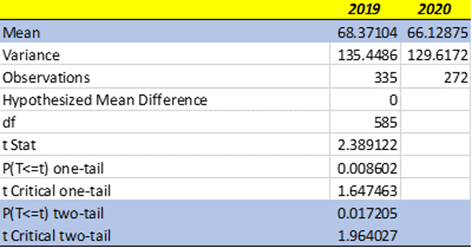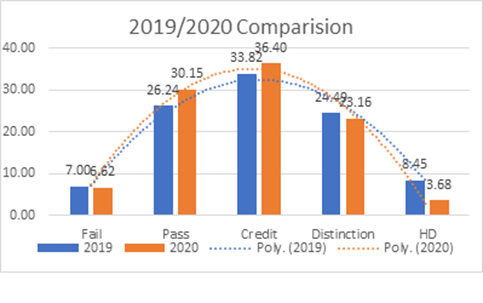
Issue 2 | Article 13
Abstract
For many years educators have sought to integrate videos into their pedagogical practices. To support ‘blended learning - a thoughtful fusion of face-to-face and online learning experiences’ (Garrison & Vaughn, 2008), the author developed a package of five-minute videos (called ‘vodcasts’) and used them in a postgraduate economics subject. The vodcasts were designed to introduce key economic concepts to students as a precursor and complement to face-to-face teaching. They were intended to be a flexible resource that addressed student diversity and helped students transition from undergraduate to postgraduate study. This article discusses the evolution of the project and the effects on student learning. Surveys and focus groups indicated that student perceptions of the vodcasts were resoundingly positive.
Introduction
Encouraging students to undertake prior activities so they are better prepared for new content delivered in class is not easy. This article describes a project undertaken to help students ease into an Economics subject by introducing a series of ‘5-minute, pre-class videos’ (referred to as vodcasts). The vodcasts were ‘flipped’ and ‘posted’ on the Learning Management System so that students could watch them before attending classes. Also, and perhaps even more important, students could re-watch them as needed throughout the semester.
Blended learning allows students to undertake online learning of new material that is later integrated into classroom experiences. By engaging with vodcasts, students can acquire an early awareness of the basic concepts of a subject/topic and can ‘tune in’ for the upcoming face-to-face lectures.
Motivations
The transition from undergraduate to postgraduate study can be difficult for students. It is especially hard if their introduction to postgraduate study includes an Economics subject that is a core part of the postgraduate business program. This is the situation faced by students being taught by the author at Universal Business School Sydney (UBSS). The subject, Introductory Economics, covers the fundamental concepts, relationships, and theories of macro and micro economics. Not only is this subject often the first exposure students have to economic terminology and abstract concepts, many students also have English as their second language (ESL), and have been out of the university system for some time. In addition, most of the students are usually time poor. Finding a good balance between work, study, family commitments, and social life is a major challenge for them.
Like most introductory subjects, Economics involves sequential learning (Ritter, 2007). Each week’s new material is built on the concepts and relationships covered in preceding lectures. Learners can quickly fall behind if they are not on top of each week’s new material. Providing “flipped” (Abeysekera and Dawson, 2015) ‘5-minute, pre-class videos’ before face-to-face learning and blending these into the syllabus can increase student engagement – particularly with a new subject.
Having a sound understanding of basic economic concepts is essential for mastering the more advanced subjects in the UBSS postgraduate program such as Business Finance, Accounting, Management, and Marketing. Business Finance is essentially applied economics because one needs to understand the principles of macroeconomics to follow the financial markets, while Accounting is about economic reporting. Introductory Economics covers the different types of market structure that students refer to when putting together marketing, strategic, or business plans in later subjects. As for Management subjects, students must apply basic economic quantitative techniques to derive and interpret results when analysing business performance.
Benefits of ‘flipped’ videos in the postgraduate business program
Research shows that prior provision of appropriate digital resources can help students become familiar with key concepts before they are explained and expanded upon in class. The flipped classroom can increase student engagement (Smallhorn, 2017). Price and Walker (2019) suggest that the flexible delivery of videos allows learners to access material in their own time and at their own pace and facilitates the transition to postgraduate study of students from diverse backgrounds. New learners usually find abstract economic concepts challenging. The flipped videos provide clear and concise summaries of the topics before students come to class. The ability to rewind and adjust the playback speed of the vodcasts is especially helpful to ESL and time-poor students.
Production of the vodcasts
The inspiration for the vodcast project came from a one-day workshop entitled ‘The Power of Screen Presenting’. That workshop convinced the author that vodcasts would be a useful vehicle for introducing and reinforcing fundamental economic concepts to students. Because of their ‘flipped’ and ‘flexible’ nature, vodcasts would be particularly helpful to linguistically and culturally diverse cohorts.
Before developing transcripts for the videos, the author collected and collated comments and suggestions from other teaching staff. A presenter was engaged to record the material on camera, and a special arrangement was made with the video-production crew to ensure their continuous support and guidance. To encourage students to watch the vodcasts before class, the content of the videos was incorporated into the tutorial exercises and assessments.
Discussions of results and findings
To measure the effects of the vodcasts on student performance, a Two-Sample Assuming Unequal Variances t-Test (Aspin-Welch-Satterthwaite test) was conducted between the control group of 335 students who undertook the subject in 2019 prior to the introduction of vodcasts and the sample group of 272 students who had access to the vodcasts in 2020.
In 2019, before the introduction of vodcasts, the average mark of students taking the Introductory Economics subject was 68.37. In 2020, when the vodcasts were used, it was 66.13 (Table 1). The difference in the mean, of -2.24, is statistically significant at the 2% level. However, one should not be overly concerned that the introduction of vodcasts was associated with a negative impact on final marks because previous research has shown that students’ overall performance in Introductory Economics is influenced considerably by the levels of Mathematics and Economics taken prior to taking up the subject (Mallik 2016), and these differ significantly among cohorts.
Table 1: Two-sample assuming unequal variances t-test results
The grade comparison (Table 2 and Graph 1) indicates slight declines in the number of students achieving High Distinction (HD) and Distinction (D). The drop in the HD grade is not a major concern because HDs are only awarded to outstanding students whose performance is determined mainly by their intrinsic ability and motivation rather than by teaching quality, characteristics that differ considerably from cohort to cohort.
Table 2: Grade comparison before and after the introduction of Vodcast
| Fail (%) |
Pass (%) |
Credit (%) |
Distinction (%) |
HD (%) |
|
| Before (2019) | 7.00 | 26.24 | 33.82 | 24.29 | 8.45 |
| After (2020) | 6.62 | 30.15 | 36.40 | 23.16 | 3.68 |
However, the improved performances of average students and those who are struggling were encouraging. There was a drop in the Fail grade from 7.00% to 6.62%, an improvement of 0.38 percentage point (pp). The Pass grade increased from 26.24% to 30.15%, a boost of 3.91pp. The Credit grade also rose, from 33.82% to 36.40%, an improvement of 2.58pp. These results suggest that the introduction of ‘5-minute, pre-class videos’ helped average and below-average students achieve better results. The flipped classroom and blended learning approaches were useful for most students.
Graph 1:
Key findings and student comments from focus groups
The student feedback survey (SFU) results and colleague feedback showed a strong and positive indication that the vodcasts helped ease students’ transition to postgraduate study and increased their engagement. Post-semester/trimester surveys were encouraging, with 62% of respondents indicating that the vodcasts addressed the subject topics at an adequate depth. Feedback from a colleague and student focus group interviews include such comments as:
“Harry’s vodcasts provide a brief and clear summary of the main concepts to be considered in each lecture”. Peter Docherty, Associate Professor, Economics Discipline Group, University of Technology Sydney.
“I really enjoy them – it showed me the main idea and allowed me to understand a few more things that happened in class – so I could talk to myself and ask myself ‘ok what’s the key point – how can I better understand the theory’.
“I watched the first ones as economics is totally new for me, I’ve never studied it before. That was really good and helped me feel prepared coming to class and feel that I understood a little more”.
Conclusion
There are many benefits from using flipped and blended learning vodcasts in terms of improving student engagement and easing the transition to postgraduate study. As a teaching and learning resource, vodcasts are an excellent introduction and revision tool as learners can watch them as many times as required (Ng 2015). Vodcasts are particularly useful for introducing fundamental economic concepts, allowing learners to come to class better prepared to take on more challenging theories and problem-solving exercises.
Vodcasts, however, have limitations as they are expensive and time consuming to produce. Educators and university managers should design syllabi in a way that supports the use of vodcasts as complements to in-class learning activities and experiences.
References
Abeysekera, L. and Dawan P. (2015), Motivation and cognitive load in the flipped classroom: definition, rational and a call for research, Higher Education Research & Development 34(1): 1-14.
Garrison, D.R. & Vaughan, N.D. (2008), Blended Learning in Higher Education: Framework, Principles, and guidelines. San Francisco: Jossey-Bass.
Mallik, G., & Shankar, S. (2016). Does prior knowledge of economics and higher level mathematics improve student learning in principles of economics, Economic Analysis and Policy, Volume 49, March 2016, Pages 66-73.
Ng. W., (2015). New Digital Technology in Education: Conceptualising Professional Learning for Educators. Springer International Publishing.
Price, C., & Walker, M. (2019). Improving the accessibility of foundation statistics for undergraduate business and management students using a flipped classroom. Studies in Higher Education, DOI: 10.1080/03075079.2019. 1628204.
Ritter F. E.; et al., eds. (2007). In order to learn: how the sequence of topics influences learning. Oxford series on cognitive models and architectures. Oxford/New York: Oxford University Press. ISBN 978-0-19-517884-5.
Smallhorn, M. (2017). The flipped classroom: A learning model to increase student engagement not academic achievement. Student Success, B (2), 43-53. DOI: 10.5204/ssj. v8i2.381.
Two-Sample T-Tests Allowing Unequal Variance. Retrieved from https://ncss-wpengine.netdna-ssl.com/wp-content/themes/ncss/pdf/Procedures/PASS/Two-Sample_T-Tests_Allowing_Unequal_Variance.pdf
Biography

Harry Tse is Assistant Professor at UBSS and a Lecturer for the Economics Group, Business School, at the University of Technology, Sydney (UTS). Prior to joining the Business School at UTS, he was Head of the Economics & Statistics Department at UTS: Insearch. Harry has written two well-known textbooks on Economics (one published by Pearson and the other by McGraw-Hill) as well as 14 peer-reviewed journal articles and 11 conference papers.




